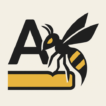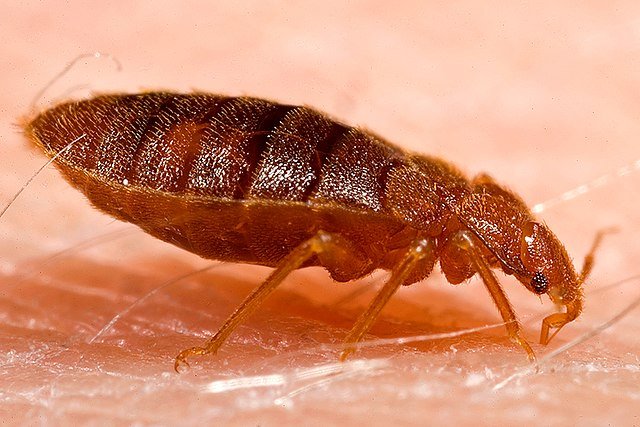How to do squirrel removal from attic and garden without killing them?
Squirrels are funny to watch in the park, but when they move inside your attic or eat all your garden food, the problem is not so funny anymore. Many people search online for “how to get rid of squirrels” but also want to do it in a kind way, without poison or killing. In this guide you will find simple steps to remove squirrels from attic, garden, or bird feeders in a humane way. We will also look at laws in USA, UK, Europe and Australia, because the rules are not the same everywhere.
Why should I choose humane squirrel removal?
Squirrels are smart and can adapt fast. If you only trap or poison, the problem often comes back because new squirrels will enter. Humane removal means you focus on exclusion and prevention. That means you block holes, protect food, and change the space so squirrels cannot enter again. It is better for the animal and better for you, because you fix the root of the problem.
Another reason is law. In many countries it is not legal to relocate or release invasive species like grey squirrels. Humane exclusion is the safe way to stay legal.
And of course, there is health. Squirrels can carry fleas, ticks and sometimes other parasites. They rarely carry rabies, but it is still smart to avoid direct contact. Humane exclusion keeps both humans and animals safe.
When do squirrels have babies and why does timing matter?
One of the most important things before you close any hole in the attic is to check if babies are inside. Squirrels usually have two breeding seasons: one in late winter to spring, and another in late summer to early autumn. If you seal a hole when babies are still in the nest, the mother will be locked outside, and the babies can die. This not only is cruel but will also cause bad smells and more damage in your attic.
So always check the time of year. If it is baby season, wait until the babies can move on their own, or make sure to reunite them with the mother before you do the exclusion work.
How can I find where squirrels are entering my attic?
Look for chewing marks, droppings, rub marks on wood, and daylight holes around soffits, fascia boards, vents and chimneys. Sometimes you can hear scratching sounds at night or in early morning. That helps you locate the entry point.
It is important to find all entry points, not only the main one. You will close the small holes first, and leave the main exit open for the one-way door. If you only close some holes and leave one open, the squirrels will continue to use it. If you close all holes without planning, you can trap them inside, which is not humane.
What is a one-way door and how does it work?
A one-way door is a special device you place on the main squirrel entry hole. The squirrel can push it open to go out, but it cannot get back inside. This method is simple and effective, because the animal leaves on its own.
The steps are:
Seal all secondary holes with strong material like sheet metal or hardware cloth.
Install the one-way door on the main hole.
Leave it for 3–7 days. Sprinkle flour near the exit if you want to check tracks.
When you hear no more noise and see no activity, remove the door and seal the hole permanently.
This way you are sure no squirrels are left inside, and they cannot return.
How do I seal the house to keep squirrels out for good?
After the squirrel removal, you must close all holes strong. Use hardware cloth with small mesh (¼–½ inch) and secure it with screws and washers. Put metal flashing on weak areas like soffits or fascia. Install chimney caps and vent screens.
Do not forget the trees. Trim branches that touch the roof, because squirrels can jump from them. A clear distance of 5–7 feet is a good rule. Once the house is sealed, you will not have the same problem again.
How can I protect my bird feeders from squirrels?
Most backyard squirrel problems start with bird feeders. Squirrels are smart climbers and will eat all the seed. The best trick is the 5-7-9 rule:
Place the feeder 5 feet high from the ground.
Keep it 7 feet away from anything squirrels can jump from.
Make sure it is 9 feet below any tree branches.
Also, add a baffle on the pole. This is a dome or tube that makes it hard for squirrels to climb up. Store bird seed in metal containers so they cannot chew through plastic. Clean up spilled seed from the ground.
Some people use feeders that close when a heavy animal sits on them. Others use safflower seed, which squirrels like less. Capsaicin-coated seed can work for some people, but it is not always 100% effective.
What can I do in my yard and garden to stop squirrel damage?
Use wire mesh to protect vegetable beds and young plants.
For decks and porches, bury hardware cloth a few inches in the ground and extend it outward, so squirrels cannot dig under.
Store trash in closed bins. Bring pet food inside.
Repair wood parts with strong materials that are harder to chew.
This is called yard and home “hardening.” It makes your property less attractive to squirrels.
Do squirrel repellents really work?
There are some repellents, but results are mixed. Taste repellents like thiram or bitter sprays can stop chewing on plants or bulbs, but they do not stop squirrels from entering a house. Capsaicin sprays or coated bird food can sometimes help, but not always.
Ultrasonic devices or strong smells often do not give consistent results. If you want long-term solution, repellents alone are not enough. Use them as an extra support, but always combine with exclusion.
What does the law say about squirrel removal in different countries?
United States: In many states, moving or relocating squirrels far away is not legal. Most wildlife agencies recommend exclusion. If you trap, many places only allow release on site.
United Kingdom: Grey squirrels are invasive. It is illegal to catch and release them back. Exclusion and proofing are the humane option.
European Union: Grey squirrels are controlled by EU law. Moving them is not allowed. Again, focus on exclusion.
Australia: True squirrels are rare. If you see one, it may be a biosecurity case and should be reported. In many cases, noises in the roof are not squirrels but possums, which have different protections.
Always check local rules before you try any method.
Are squirrels dangerous for health?
Squirrels are not usually dangerous. They do not often carry rabies, but they can carry fleas or ticks. It is smart not to handle them directly. If you get bitten, clean the wound and ask a doctor for advice. Keep pets vaccinated as a normal safety rule.
What is a simple weekend plan to solve squirrel problems?
Check the season and make sure no babies are inside.
Inspect the house and mark all entry points.
Close small holes and install a one-way door on the main hole.
Wait 3–7 days, then check for noise.
If quiet, remove the door and seal the hole strong.
Add chimney caps, vent screens, and trim branches.
Fix bird feeders with the 5-7-9 rule and baffles.
Keep yard clean and watch again after some months.
Do this once, carefully, and usually you will not have to repeat.
Frequently Asked Questions for Squirrel Removal
How do I know the squirrels are gone so I can close the hole?
If you do not hear noise for 48 hours and see no fresh tracks, then it is safe to close.
Can I trap and release squirrels in a park?
In many countries no. In the UK and EU it is illegal. In many US states it is not allowed. Exclusion is safer.
Do hot pepper seeds stop squirrels at feeders?
Sometimes they help, sometimes not. Use them together with baffles and good feeder placement.
What mesh size is good for blocking squirrels?
¼–½ inch hardware cloth is the normal size.
When is the best time of yearfor squirrel removal?
Best time is outside baby seasons, so late spring or mid-autumn.
Conclusion
Squirrels are part of nature, but they do not belong inside your attic or eating all your bird food. Humane removal is possible with one-way doors, sealing holes, and changing how you manage food and feeders. It takes a little work, but it solves the problem without killing the animal and without breaking the law.
Author
Nasos Iliopoulos,
MSc Agronomist & Certified Pest Control Expert
Scientific Director, Advance Services (Athens, Greece)
Licensed Pest Control Business – Ministry of Rural Development & Food (GR)
Disclaimer
This article is for informational purposes only. Pest control laws and approved chemicals vary by country. For best results and legal safety, we strongly recommend contacting a licensed pest control professional in your local area. Always make sure that the pest control technician is properly certified or licensed, depending on your country’s regulations. It’s important to confirm that they only use approved products and apply them exactly as instructed on the product label. In most places in Europe, UK, or USA, following label directions is not just best practice—it’s the law.

